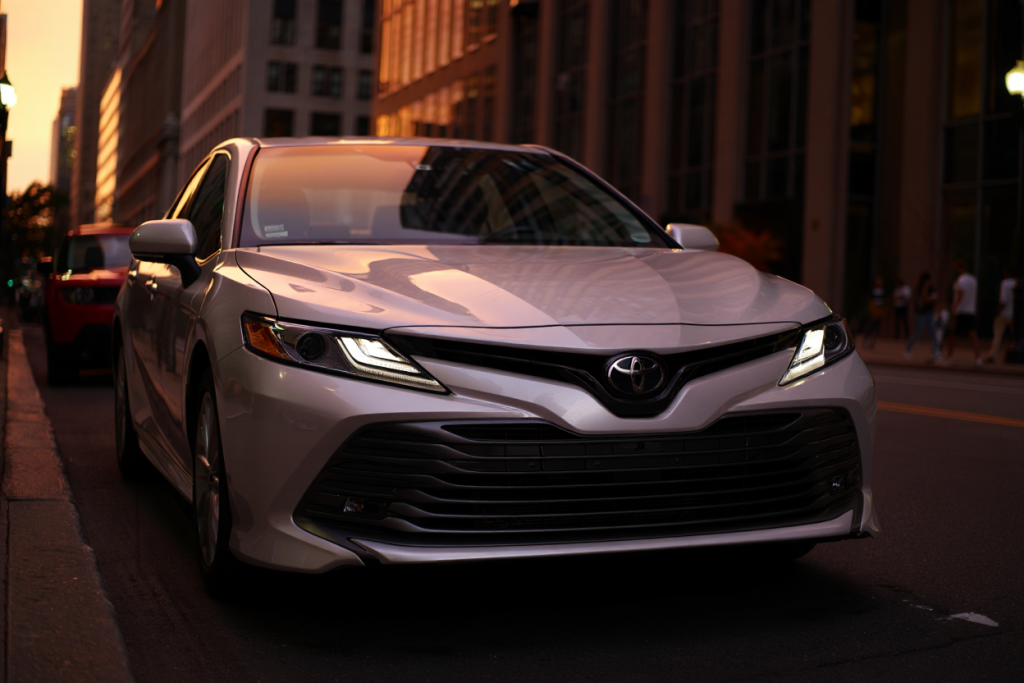Fuel costs are one of the biggest ongoing expenses of owning a car. With gas prices climbing and more drivers thinking about eco-friendly habits, improving fuel efficiency is no longer just a money-saving measure—it’s also a smart way to extend the life of your vehicle. Many car owners believe that better fuel economy requires buying a hybrid or an electric vehicle, but the truth is, even small changes to how you drive and maintain your car can make a big difference.
In this guide, we’ll cover everything from driving habits to maintenance routines and even when it makes sense to consider upgrading your vehicle. Whether you’re driving a compact sedan, a pickup, or a family SUV, these proven tips will help you squeeze the most miles out of every gallon.
What Fuel Efficiency Means (MPG Explained)
Miles per gallon (MPG) is the most common way to measure fuel efficiency. It simply tells you how many miles your car can travel on a single gallon of fuel. For example, a vehicle that gets 30 MPG can cover 30 miles for every gallon of gas. Simple enough, right? The catch is that real-world driving often looks very different from those neat numbers on the window sticker.
Factors like traffic, driving style, terrain, and even the weather can make a big impact. City driving usually delivers worse MPG than highway driving due to frequent stops, idling, and acceleration. If you’ve ever wondered why your car’s fuel economy doesn’t match the “EPA estimate,” these variables are usually the reason.
Why Fuel Efficiency Varies Between Cars
Not all cars are built the same. A small four-cylinder sedan will almost always use less fuel than a heavy SUV with a V8 engine. Aerodynamics also matter—boxy vehicles push more air, which increases drag and lowers efficiency. Weight plays a big role too; the heavier your car, the more energy it takes to move.
Fuel type is another factor. Diesel engines, for instance, usually deliver better mileage than gasoline engines but may come with higher maintenance costs. Hybrid and plug-in hybrid models combine gasoline with electric motors to stretch fuel further. And while electric vehicles (EVs) don’t use gas at all, they’re part of the same conversation because they highlight just how much energy traditional engines need compared to modern alternatives.
Smart Driving Habits That Save Fuel
Smooth Acceleration and Braking
Aggressive driving—slamming the gas pedal or braking hard—burns a surprising amount of fuel. Engines are most efficient at moderate speeds and steady throttle inputs. A good rule of thumb is to accelerate smoothly and aim to stay within the optimal RPM range (usually between 1,500 and 2,500 RPM for most gasoline cars).
Think of it like this: flooring the pedal may get you to the next stoplight faster, but it also wastes fuel, wears out brakes, and shortens the lifespan of your engine components. Instead, anticipate traffic flow and drive as if you’re trying to avoid spilling a cup of coffee on your dashboard.
Maintaining Steady Speeds
Your car’s fuel efficiency drops every time you fluctuate between high and low speeds. Cruise control on highways helps by keeping your speed steady and preventing unnecessary surges. Studies show that maintaining a constant 60 mph uses significantly less fuel than bouncing between 55 mph and 70 mph.
The sweet spot for most vehicles is between 45–65 mph. Driving faster than that usually increases drag dramatically, meaning your engine has to work harder and burn more fuel just to overcome wind resistance.
Idling vs. Restarting: What’s Better?
In older cars, restarting the engine consumed more fuel than letting it idle. But modern engines are designed differently. Today, it’s more fuel-efficient to shut off your car if you’re waiting for more than a minute. That’s why many vehicles now come with “auto start-stop” systems.
If you’re waiting in a drive-thru, picking up a friend, or stuck at a long train crossing, turning off the engine can save gas and reduce emissions. The only exception might be in extreme weather where you need the AC or heater running for safety or comfort.
Vehicle Maintenance for Maximum Fuel Economy

Tire Pressure and Wheel Alignment
Tires are one of the most overlooked factors in fuel economy. Driving on underinflated tires increases rolling resistance, which forces the engine to work harder and consume more fuel. Even being 5–10 PSI below the recommended pressure can reduce mileage by 1–2 MPG.
Check your tire pressure monthly and always before long trips. Seasonal changes matter too—cold weather naturally lowers tire pressure. Wheel alignment also plays a role. Misaligned wheels cause uneven tire wear and drag, which cuts into efficiency and handling. Spending $75–$100 on an alignment can easily pay for itself in fuel savings.
Engine Tune-Ups and Oil Changes
Your engine runs best when it’s properly maintained. Worn-out spark plugs, dirty oil, or clogged filters all decrease efficiency. For example, replacing old spark plugs can improve fuel economy by up to 4%.
Oil changes are another key step. Using the right grade of oil—whether OEM-recommended or a high-quality aftermarket synthetic—reduces friction and helps the engine run smoothly. Skipping oil changes or using cheap oil might save money short-term but often leads to higher fuel use and costly repairs later.
Air Filter and Fuel System Care
Engines need the right balance of air and fuel to run efficiently. A clogged air filter restricts airflow, forcing the engine to burn more fuel. Replacing an air filter every 12,000–15,000 miles (or as specified in your manual) is one of the simplest ways to improve mileage.
Fuel system care also matters. Dirty injectors or carbon buildup can disrupt combustion. Using a quality fuel injector cleaner once or twice a year helps keep things running efficiently. While OEM filters and injectors are usually more reliable, high-quality aftermarket options can be just as effective at a lower cost.
Reducing Extra Load on Your Car
Unnecessary Weight in the Trunk
The heavier your car, the more gas it needs to move. Carrying around unnecessary items like toolboxes, sports gear, or heavy equipment in the trunk can lower your MPG without you realizing it.
A good rule: remove anything you don’t use regularly. Think of it like hiking—you wouldn’t carry extra weight unless you had to. For smaller cars especially, even an extra 100 pounds can reduce fuel efficiency by 1–2%.
Aerodynamics and Roof Accessories
Roof racks, cargo boxes, and bike carriers look practical, but they often hurt efficiency. By increasing drag, they can cut fuel economy by 10–15% on the highway. Unless you’re actively using them, it’s best to remove these accessories.
If you need extra cargo space, consider alternatives like hitch-mounted carriers. They generally have less impact on aerodynamics and fuel economy.
Fuel Choices and Driving Conditions
Choosing the Right Fuel Type
Many drivers assume premium fuel is always better. The truth is, unless your car specifically requires premium, filling up with it is just wasting money. Most modern engines designed for regular unleaded won’t see any fuel efficiency benefit from premium.
Ethanol blends are another factor. Fuels like E10 (10% ethanol) are common and safe for most cars, but higher ethanol blends like E85 can reduce fuel economy by 15–30% because ethanol contains less energy per gallon than gasoline. Always check your owner’s manual before switching fuel types.
Seasonal and Weather Impacts
Cold weather is notorious for lowering fuel economy. Engines take longer to reach operating temperature, and heaters, defrosters, and thicker winter oil all put extra strain on the system. Short trips in winter are especially hard on MPG.
On the other hand, running the AC in summer also reduces efficiency by 1–4 MPG depending on the car. The best approach is balance: use climate control when necessary, but avoid blasting it at full power all the time.
Cost vs. Savings: Is It Worth It?
Short-Term Habits vs. Long-Term Upgrades
Some improvements cost little to nothing, like keeping your tires inflated, removing excess weight, or adjusting your driving style. Others require investment, such as upgrading to low-rolling-resistance tires or installing a more efficient exhaust system.
If you drive long distances regularly, these upgrades often pay for themselves over time. For short commutes, focus on small, consistent habits first before considering larger expenses.
Fuel Efficiency Myths Debunked
- Myth: Letting your car warm up improves mileage.
Truth: Modern engines don’t need more than 30 seconds of idling, even in winter. - Myth: Premium fuel always increases MPG.
Truth: Unless required, it’s a waste of money. - Myth: Driving slower always saves gas.
Truth: Efficiency peaks at moderate speeds (45–65 mph). Driving too slow in higher gears can actually waste fuel.
When It’s Time to Replace Your Car?
Signs Your Car Is No Longer Fuel-Efficient
If your car is more than 15 years old and requires constant repairs, the money spent keeping it alive may outweigh the fuel savings. Modern vehicles come with advanced fuel injection, turbocharging, and hybrid technology that make older models look inefficient by comparison.
Compare your repair costs to your fuel savings. If you’re spending thousands every year just to keep an old car on the road, it might be time to upgrade.
Upgrading to Hybrid or Electric
Hybrid and electric cars come with higher upfront costs, but the long-term savings are significant. Hybrids can deliver 40–60 MPG, while EVs eliminate fuel costs altogether. Plus, government incentives and tax credits can help offset the purchase price.
If you’re a high-mileage driver, switching to a hybrid or EV can save thousands over the life of the vehicle.
Final Thoughts
Improving your car’s fuel efficiency isn’t just about saving a few bucks at the pump—it’s about making your vehicle last longer, reducing wear and tear, and cutting down on emissions. Small changes like checking tire pressure, keeping up with oil changes, and driving smoothly can add up to noticeable savings over time.
Start with one habit today—whether it’s removing excess weight from your trunk or paying attention to your acceleration—and track your fuel economy. You’ll be surprised how quickly the results show up.
FAQs
Does using the AC always reduce fuel efficiency?
Yes, but the impact varies. At highway speeds, open windows increase drag, so AC may actually be better.
How much money can I realistically save by improving MPG?
Even improving by 2–3 MPG can save hundreds per year if you drive 12,000+ miles.
Is it true that driving slower always saves gas?
Not always. Efficiency peaks between 45–65 mph. Going slower than that may waste gas in lower gears.
Do fuel additives or octane boosters really help MPG?
Most don’t. Stick with reputable fuel injector cleaners and avoid gimmicky additives.
What’s the best speed to drive for optimal fuel efficiency?
Typically 50–60 mph, depending on your car.
How often should I check my tire pressure for best mileage?
At least once a month, and before any long road trip.

Benjamin Grey is an automotive engineer and writer at Car Parts Advisor. With years of experience in the automotive industry, he shares expert advice on car parts, maintenance, and repairs to help car owners keep their vehicles running smoothly.





